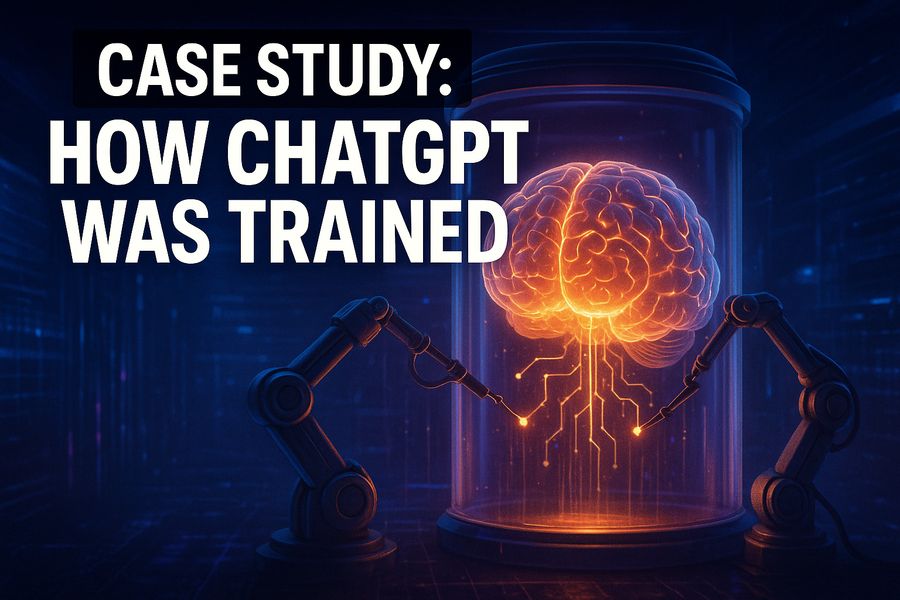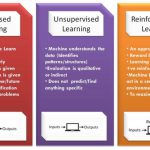Artificial Intelligence (AI) has taken massive leaps in recent years, and one of the most groundbreaking innovations in natural language processing is ChatGPT — a large language model developed by OpenAI. But how exactly was this AI assistant trained and optimized to become so conversational, knowledgeable, and user-friendly? Let’s delve into the fascinating case study of how ChatGPT was brought to life. 🌟
🧠 1. Understanding the Foundation: Transformer Architecture
The core of ChatGPT is built on the Transformer architecture, introduced in a 2017 paper titled “Attention is All You Need”. This design revolutionized natural language processing (NLP) by allowing models to understand context more efficiently through a mechanism called self-attention.
Key Highlights:
-
Self-attention helps the model weigh the importance of each word in a sentence.
-
Transformers process entire sequences at once, enabling better comprehension of long-range dependencies.
-
ChatGPT is based on GPT (Generative Pretrained Transformer) architecture — hence the name.
💡 Think of Transformers as the brain’s ability to remember relevant parts of a conversation while speaking — only digital!
📊 2. Pretraining: Learning from the Internet
The first major step in training ChatGPT is unsupervised pretraining. During this phase, the model is fed vast amounts of publicly available text data from the internet — including books, websites, articles, and code.
What Happens Here:
-
The model learns to predict the next word in a sentence.
-
It develops an understanding of grammar, facts, reasoning patterns, and even some basic logic.
-
No human labeling is involved at this stage; it’s purely pattern recognition.
🗂️ Data Sources Include:
-
Wikipedia 🌐
-
Open-source books 📚
-
Public web content 🌍
-
Technical forums like StackOverflow 🧑💻
🔍 Important Note: The dataset is filtered and curated to avoid misinformation, harmful content, and biased data.
🧪 3. Supervised Fine-Tuning: Adding Human Guidance 🧑🏫
Once the base model is pretrained, OpenAI applies supervised fine-tuning to steer the model towards more useful behavior.
The Process:
-
Human AI trainers provide examples of correct outputs for a range of prompts.
-
These examples include helpful, safe, and accurate answers.
-
The model is trained to mimic this supervised dataset using traditional supervised learning techniques.
🧩 This phase is critical for making ChatGPT more aligned with human expectations and societal norms.
🎯 4. Reinforcement Learning from Human Feedback (RLHF) 🧠👍👎
Perhaps the most innovative part of ChatGPT’s training is the use of Reinforcement Learning from Human Feedback (RLHF). This makes the model more aligned with what users want — not just what is statistically correct.
Step-by-Step Breakdown:
-
Model outputs are ranked by humans based on usefulness and safety.
-
A reward model is trained based on these rankings.
-
The base model is fine-tuned using Proximal Policy Optimization (PPO) — a reinforcement learning algorithm.
⚖️ This technique helps in optimizing the model for:
-
Helpfulness ✅
-
Honesty 🧾
-
Harmlessness 🕊️
🚀 In simple terms, RLHF turns ChatGPT from a bookworm into a polite and intelligent conversation partner!
🔧 5. Continuous Evaluation and Iteration 🔄
OpenAI doesn’t stop once a version is deployed. ChatGPT undergoes regular updates, learning from:
-
User feedback 🙋
-
Error reports 🐞
-
Misuse incidents 🚨
These iterations help refine its ability to:
-
Handle nuanced queries 🧠
-
Avoid controversial content ❌
-
Provide clearer explanations 🧾
🧠 The AI is like a student constantly learning from both tests and teacher corrections.
🔐 6. Safety, Ethics, and Guardrails 🛡️
An important component of ChatGPT’s development is its safety mechanisms. The model is designed with built-in safety features to minimize harm and promote ethical use.
Key Approaches:
-
Blocking disallowed content (hate speech, misinformation) 🚫
-
Ensuring bias detection and mitigation ⚖️
-
Transparency in how answers are generated 🔍
OpenAI also actively works with researchers and policymakers to ensure that large language models are developed responsibly and transparently.
🌍 7. Real-World Applications and Learnings 💼
Thanks to its robust training process, ChatGPT is now used across various industries and applications:
-
Education 👨🏫
-
Healthcare (non-diagnostic support) 🏥
-
Customer service 🛎️
-
Content generation ✍️
-
Software development 💻
Every real-world interaction provides valuable data that helps in future improvements (while maintaining user privacy and safety). 🛠️
🚀 Conclusion: The Journey of Turning Data into Intelligence
The training and optimization of ChatGPT exemplify the incredible potential of AI when guided by cutting-edge technology, human feedback, and ethical principles. From a sea of text data to a responsive, engaging assistant — the journey of ChatGPT is not just a marvel of engineering, but also a lesson in collaborative progress. 🌟
As AI continues to evolve, so will the methods used to train it. ChatGPT stands as a milestone, showing what’s possible when machines learn from humans — and with humans. 🤝💬


